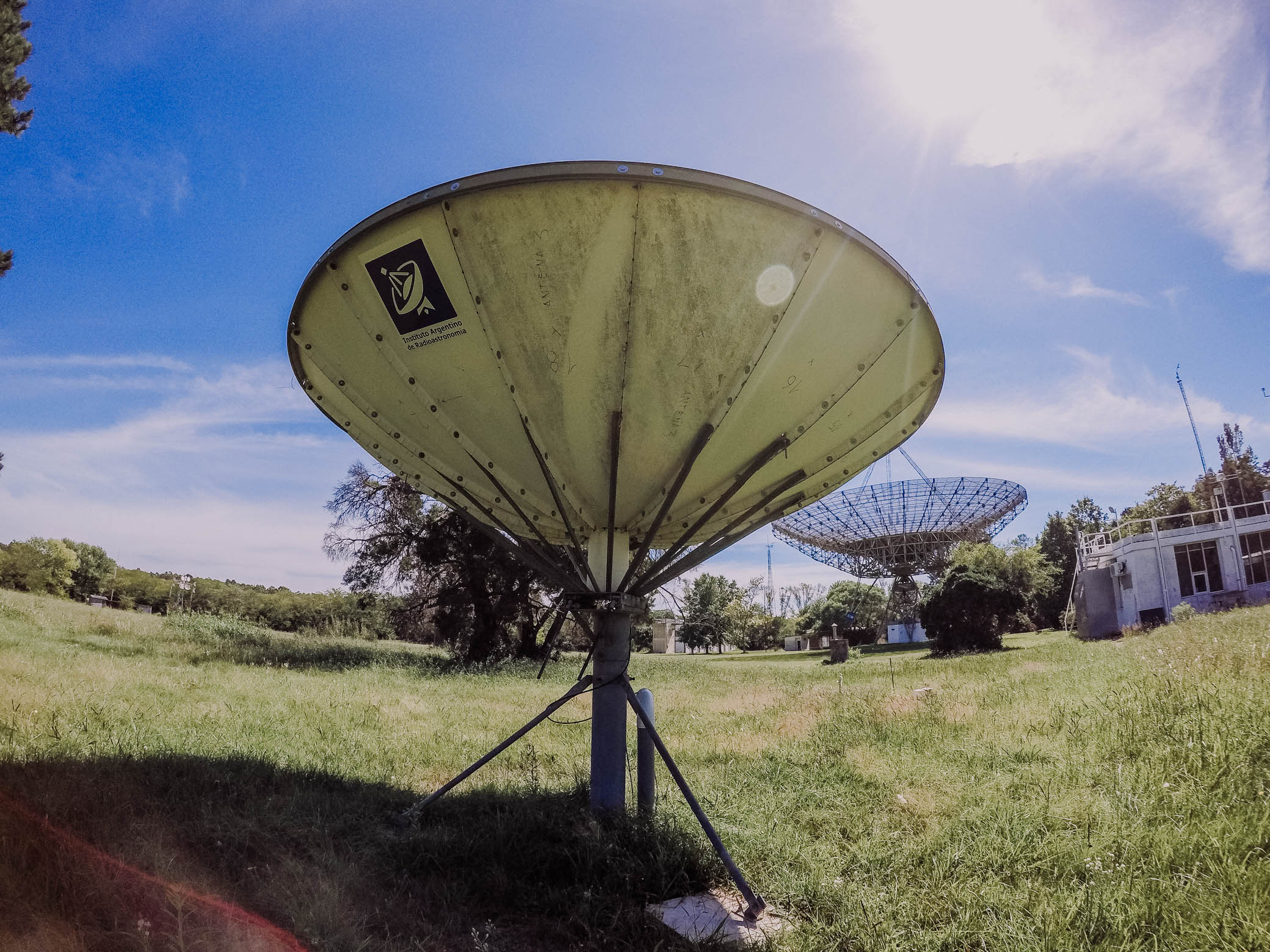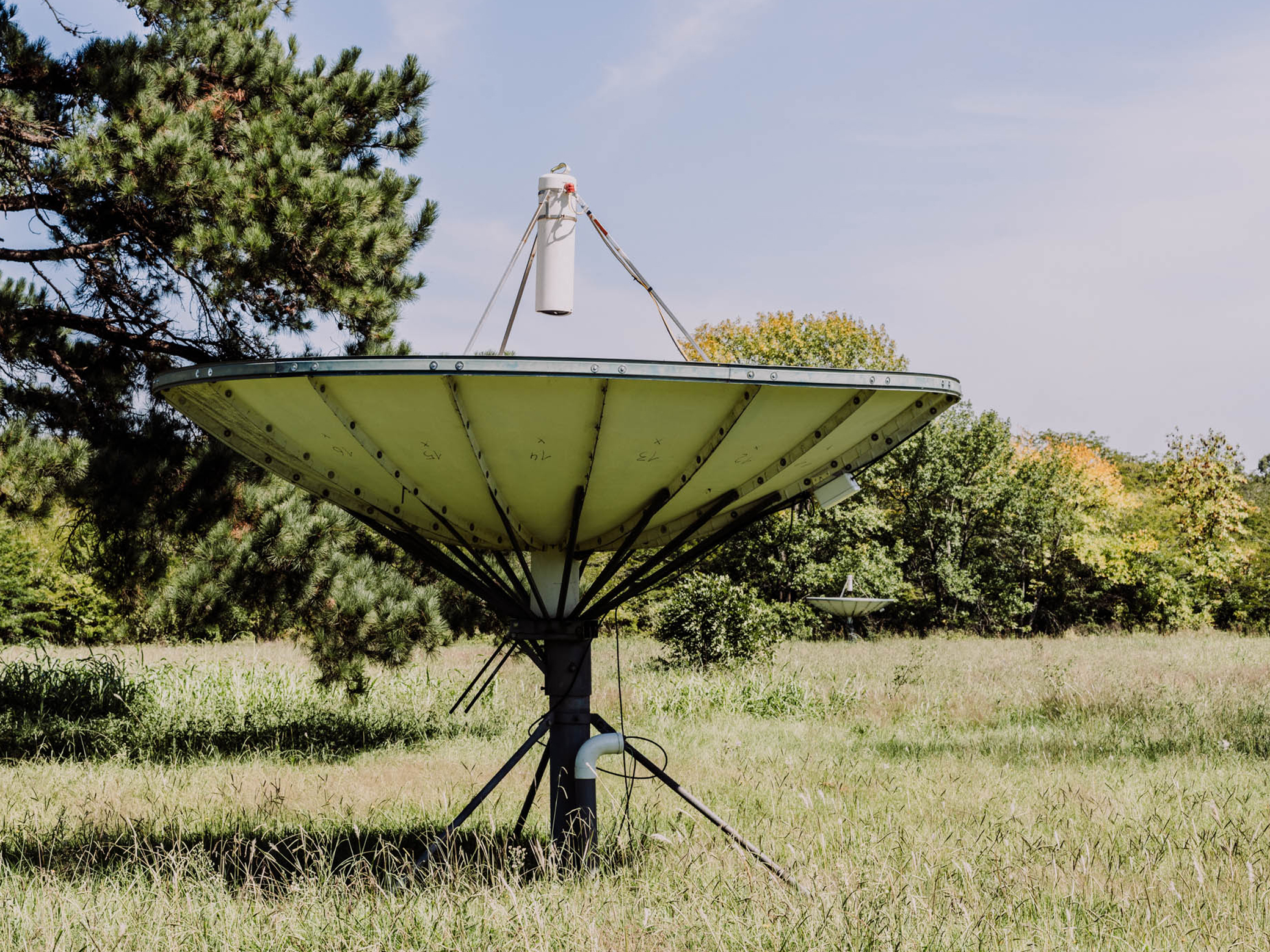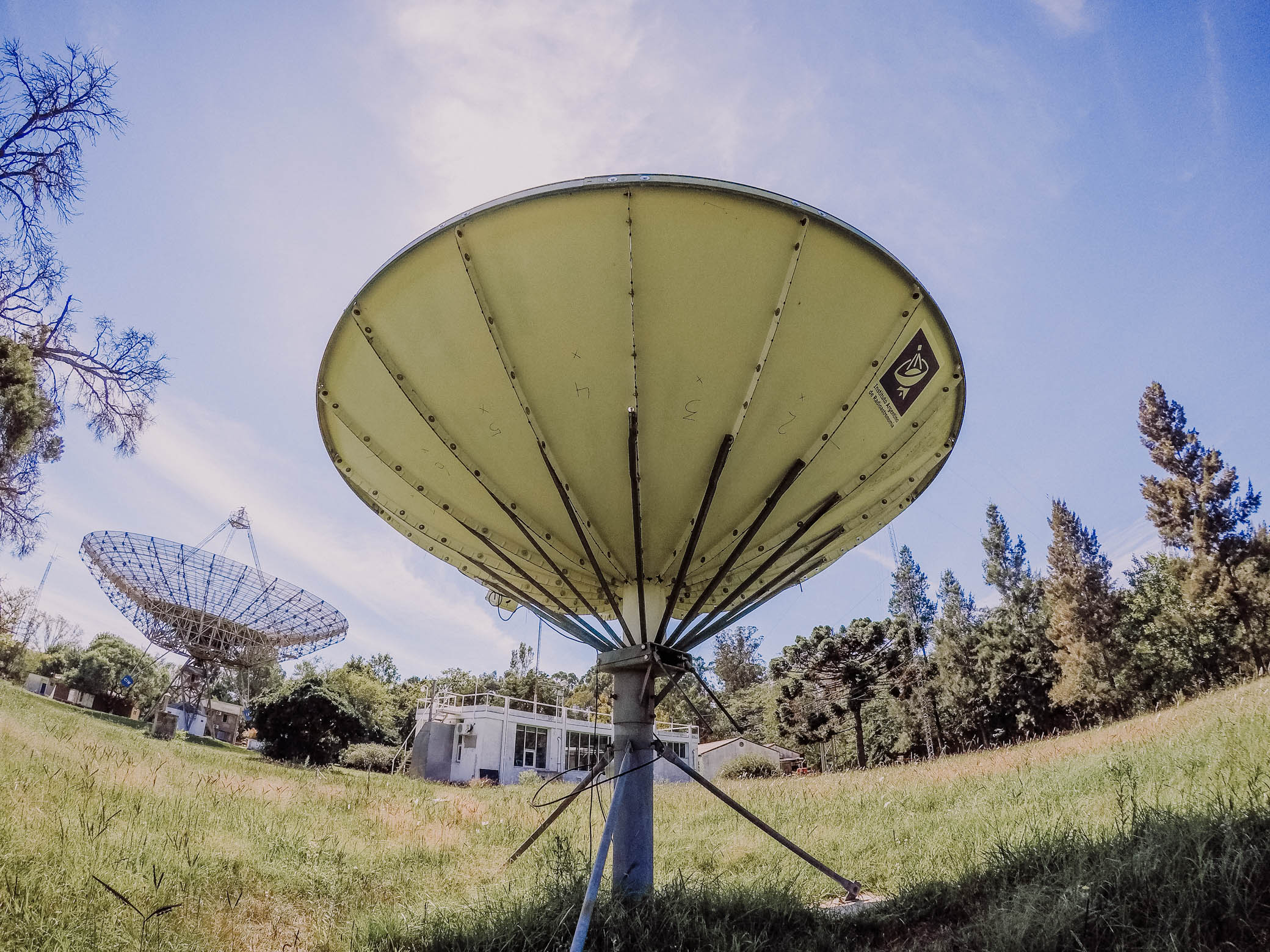Introducing MIA
Multipurpose Interferometric Array
Specifications:
- Modular ensembles by 5-meter radio antennas.
- Operates between 1000 and 2000 MHz with an instantaneous bandwidth of 250 MHz.
The development is planned in three steps:
- The first antenna will be a technology demonstrator (TD) to be completed in December 2023.
- A 3-element pathfinder located at the IAR (MIA-P).
- A 16-element instrument, MIA-16, with a maximum baseline of 55 km, sensitivity equivalent to a 36-m diameter dish, field of view of 4 degrees, angular resolution down to 1 arc second, to be deployed at an interference-free site in western Argentina. This instrument will be upgradeable to MIA-32/-64.

IAR
The Instituto Argentino de Radioastronomía (IAR) is an I+D unit attached to the Consejo Nacional de Investigaciones Científicas y Técnicas (CONICET), the Comisión de Investigaciones Científicas de la Provincia de Buenos Aires (CICPBA) and the Universidad Nacional de La Plata (UNLP). It occupies an area of 6 hectares within the Pereyra Iraola Park and has a staff of 62, including technicians, researchers, administrative staff, postdoctoral fellows and graduate students. It is located 50 km from the city of Buenos Aires.
The Institute was founded in 1962 through an agreement with the Carnegie Institution of Washington. It is the main radio astronomy center in Argentina and operates two 30-meter single-dish radio telescopes, currently devoted mainly to pulsar timing. It is also a technology development center for radio astronomy, the space sector, and private industry.
Goals
Train a new generation of scientists and engineers in advanced radio interferometry techniques while building the first instrument of its kind in Argentina.
Serve as a test bed for other technological developments, including a satellite data downlink ground station, as technology transfer.
Expand the observing capabilities of the IAR and provide a new window for exploring the highly dynamic low-frequency universe from South America, fostering collaborations and training human resources.
Carry out cutting-edge science on transient sources such as fast radio bursts, magnetars, accreting black holes and pulsars, counterparts of high-energy sources, the supermassive black hole at the Galactic Center, and active galactic nuclei. The instrument will be able to collaborate with international searches for gravitational waves from supermassive black hole binaries and contribute to the study of ionization processes in the early universe by detecting cosmologically redshifted hydrogen lines.
Feasibility
The MIA project was planned with several technical, financial, and logistical aspects in mind. The instrument was designed to be low-cost compared to similar global interferometers, ensuring its affordability. By focusing on local fabrication and assembly, the project provides an opportunity for local companies to contribute as technology providers, thereby promoting regional expertise and economic growth.
In terms of technical feasibility, the project will start with its pathfinder development at IAR, building on the knowledge gained from reference instruments, as DSA-110 and KAT-7. This will allow the team to add on to existing systems while adapting them to the specific needs of MIA.
In addition, the recruitment of undergraduate and postgraduate engineering and astronomy students will contribute to human resource development to drive the project forward. The involvement of IAR technical staff in electronics, mechanics, and IT further strengthens the viability of the project by leveraging their expertise and experience in radio astronomy.
Budget
The project budget was initially supported by CONICET through a PUE grant for research centers. These funds provide the necessary resources to launch the MIA project through the Pathfinder and start its development phases, like the design and initial construction of key components, including the radio frequency front-end and the first 5-meter parabolic dish.
As the project progresses, it will require strategic collaborations with international partners to further strengthen its financial structure. Such collaborations will not only ensure financial sustainability, but will also enhance the scientific capabilities of the project by drawing on a wider pool of expertise and experience in radio astronomy and interferometry.
This financial strategy is consistent with the project’s vision of creating a low-cost interferometer that will achieve high scientific standards and be a valuable asset to the global radio astronomy community.



Antenna Construction for MIA

Technical Info
TITULO
Poner acá un enlace a documenteación tecnica del proyecto? Ampliar en algún punto que no se haya tocado?